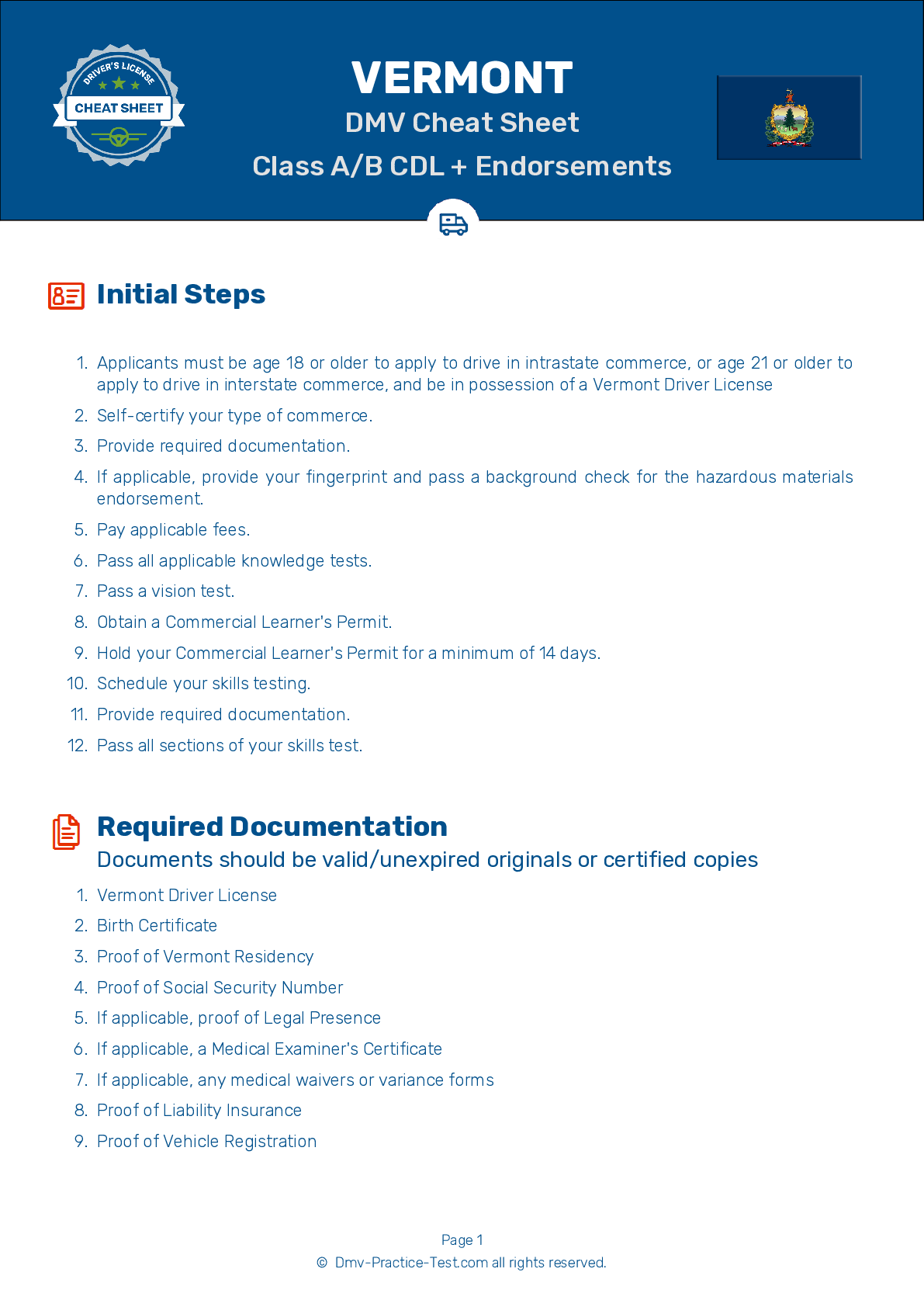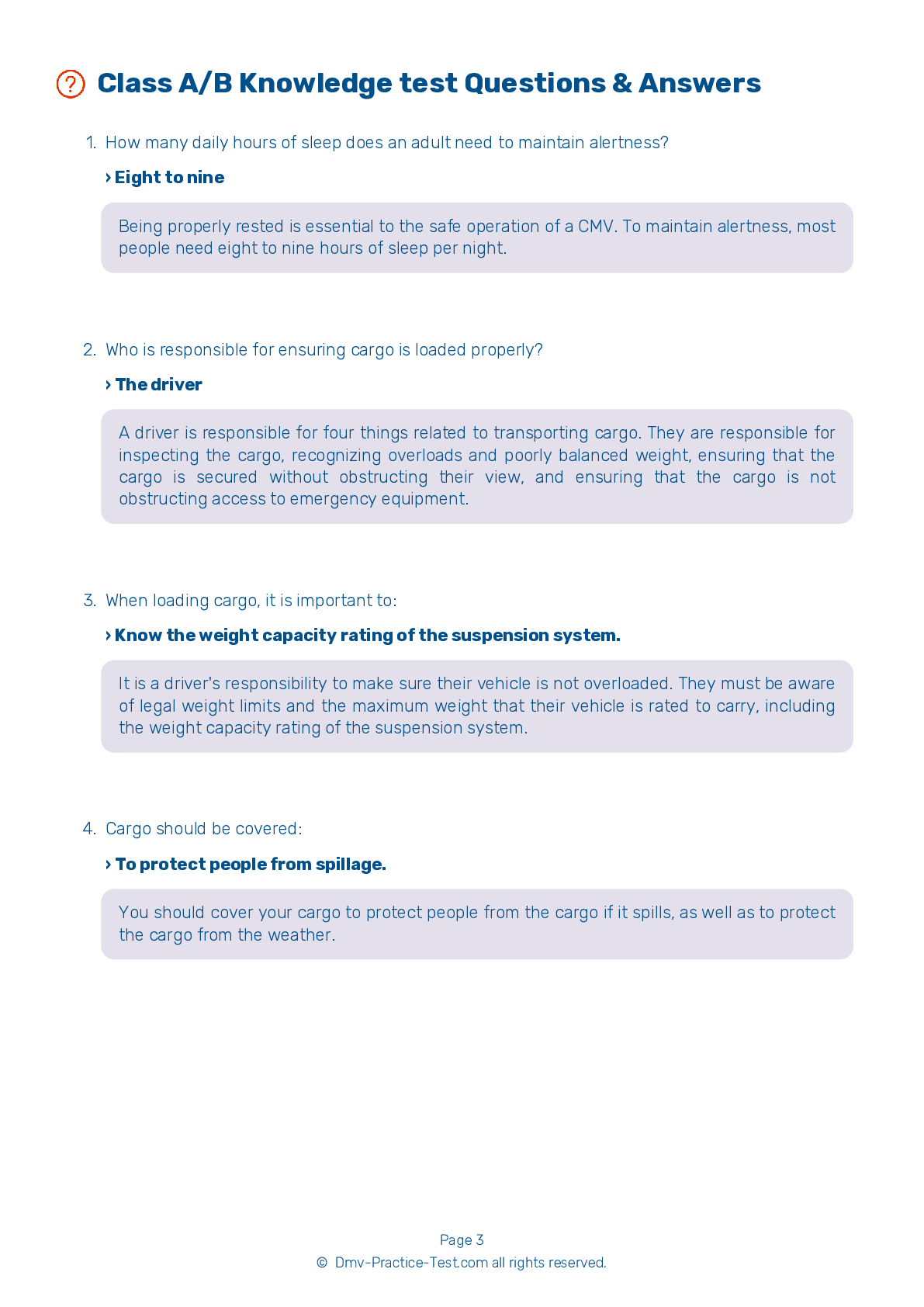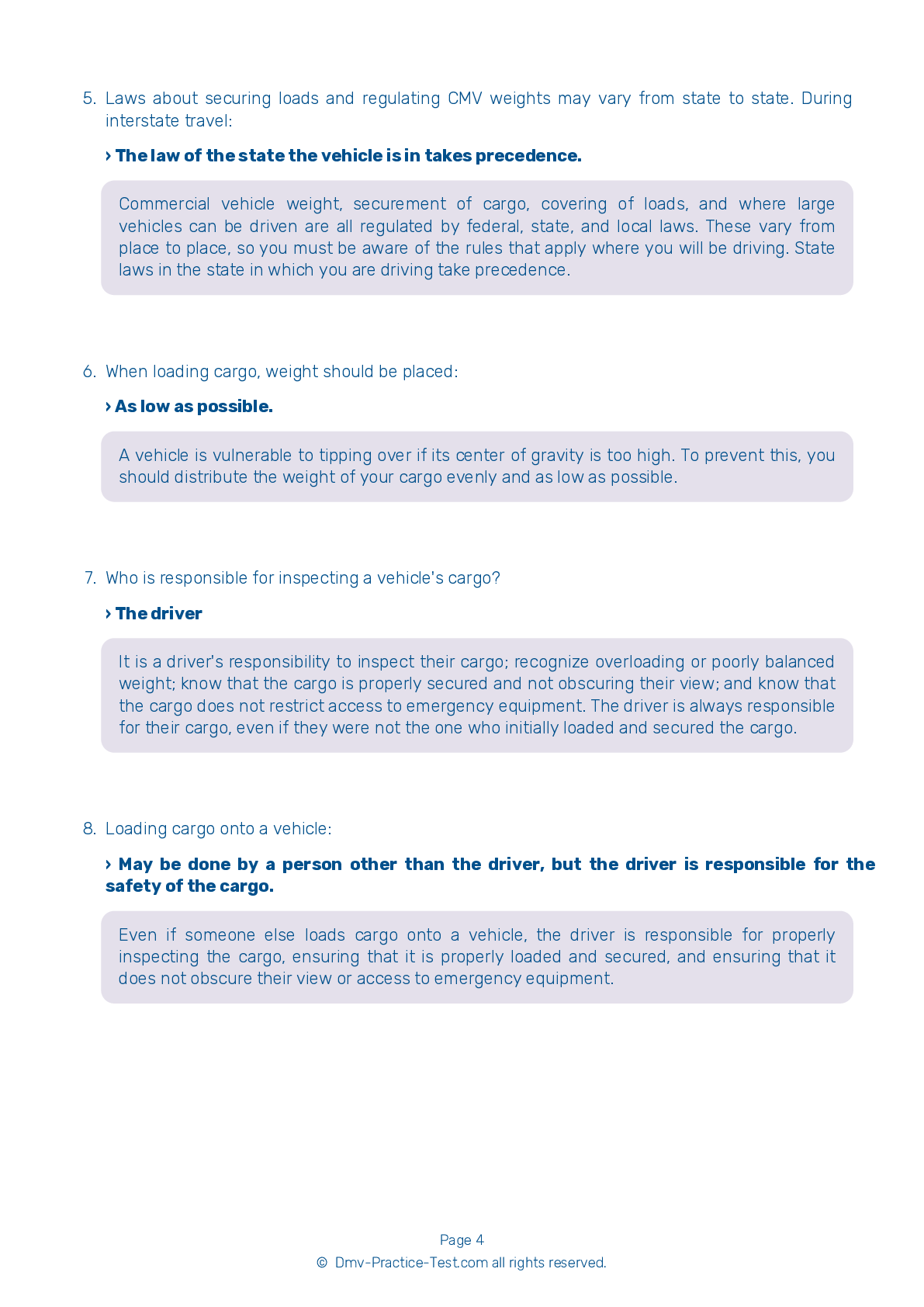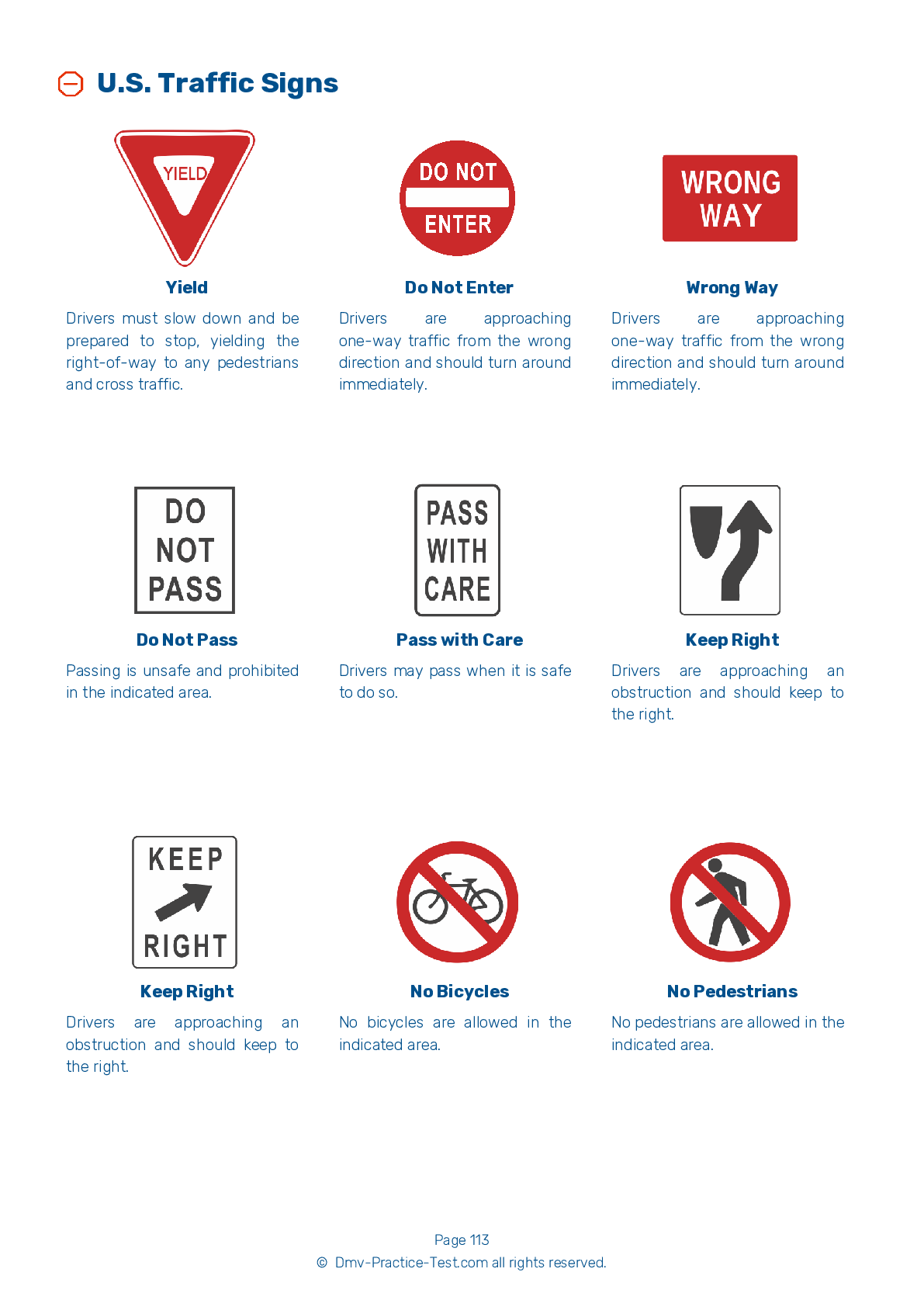Combination #2
Combination Vehicles Practice Test | Vermont 2025 #2 Page 3 of 3
Train for FREE online with our Vermont CDL combination vehicle test. The official exam test consists of several obligatory parts, with all of them checking your knowledge of different blocks of road rules. If you need to obtain a VT combination license in 2025, practice as much as possible. Free sample tests published on our website will help you check and improve your knowledge and boost your grades. Please bear in mind that DMV requirements for issuing a combination license may vary from state to state.
20
16
20
15 . In a double or triple combination, the ____ trailer should be directly behind the cab.
When positioning trailers in a combination, the most heavily-loaded trailer should be the closest to the tractor. The lightest trailer should be positioned in the rear.
16 . The tractor protection valve:
A tractor protection valve keeps air in a tractor or truck air brake system should the trailer break away or develop a bad leak. The valve will close automatically if the pressure drops to an unsafe level.
17 . If you are backing and the trailer begins to drift off-course, the driver should:
If your trailer begins to drift while you are backing, you should correct the drift immediately by turning the top of the steering wheel in the direction of the drift.
18 . A combination vehicle has ____ air line(s).
Every combination vehicle has two air lines: the service line and the emergency line.
19 . Having anti-lock brakes on only one axle:
If a vehicle has anti-lock brakes on just one axle, the driver will still have more control during braking than they would without any anti-lock brakes.
20 . Operating combination vehicles usually requires ____ operating single vehicles.
Combination vehicles are usually heavier and longer than single combination vehicles. Operating a combination vehicle requires a higher level of driving skill than operating a single commercial vehicle.
2025 Vermont | Frequently Asked Questions
To secure a CDL Bus endorsement in Vermont, you need to have a valid Commercial Driver's License (CDL). You then need to pass the passenger endorsement knowledge test and the school bus endorsement knowledge test. After passing these tests, you must successfully complete a skills test in the type of school bus you will be driving.
To obtain a CDL Bus license in Vermont, you must have a valid driver's license and pass the CDL general knowledge test. Then, you'll need to get a Commercial Learner's Permit (CLP) and practice on public roads with a qualified CDL holder. After that, pass the CDL skills tests, which include vehicle inspection, basic controls, and road test.
While Vermont doesn't explicitly require specific training for a CDL Bus endorsement, it's highly recommended. Training can help you pass the written knowledge tests and the skills test, which includes pre-trip vehicle inspection, basic vehicle controls, and on-road driving. Experience in driving similar vehicles can also be beneficial.
CDL Bus licenses in Vermont are classified under Class B or Class C. Class B CDL is for single vehicles like city buses. Class C CDL is for vehicles designed to transport 16 or more passengers, including the driver, not covered by Class B. Each class requires passing specific written knowledge tests and skills tests related to the type and size of the vehicle.
No, you cannot use your personal vehicle for the CDL Bus driving test in Vermont. The vehicle used for the test must match the class and type of vehicle you will be driving with your CDL. For a bus endorsement, this means using a commercial bus of the correct capacity and type.
The CDL Bus driving test in Vermont evaluates skills like pre-trip vehicle inspection, basic vehicle control, and on-road driving. You may be asked to perform maneuvers such as backing up, parallel parking, or docking in a designated area. On-road driving evaluates your ability to handle intersections, railway crossings, curves, and various traffic conditions.
Yes, additional medical prerequisites are required for a CDL Bus endorsement in Vermont. Applicants must pass a Department of Transportation (DOT) physical examination every 24 months. This exam assesses general physical health, vision, hearing, and the potential presence of other conditions that could affect driving ability, such as diabetes or high blood pressure.
No, it's not permissible to transport passengers without a valid CDL Bus endorsement in Vermont. The endorsement is required for drivers who wish to operate a vehicle designed to carry 16 or more passengers, including the driver. Driving without the proper endorsement can result in legal penalties, including fines and suspension of your CDL license.
The CDL Bus endorsement can be added to your existing CDL license in Vermont. You don't need to apply for a new license altogether. However, you will need to pass the Passenger Endorsement Knowledge Test and a skills test in the vehicle type you wish to be endorsed for. Ensure to have your current CDL when you apply for the endorsement.
Yes, there are restrictions for drivers with a CDL Bus endorsement in Vermont. Drivers must comply with federal hours of service regulations, which limit driving hours to prevent fatigue. Also, drivers must pass a physical exam every two years and are subject to random drug and alcohol testing. Additionally, any traffic violations or accidents can result in the suspension or revocation of the endorsement.



